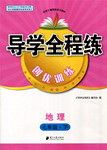题目内容
Martin Cooper , a US researcher , was considered _______ the first cell phone .
A. invented B. to invent C. having invented D. to have invented
D

练习册系列答案
 导学全程练创优训练系列答案
导学全程练创优训练系列答案
相关题目
题目内容
Martin Cooper , a US researcher , was considered _______ the first cell phone .
A. invented B. to invent C. having invented D. to have invented
D

 导学全程练创优训练系列答案
导学全程练创优训练系列答案